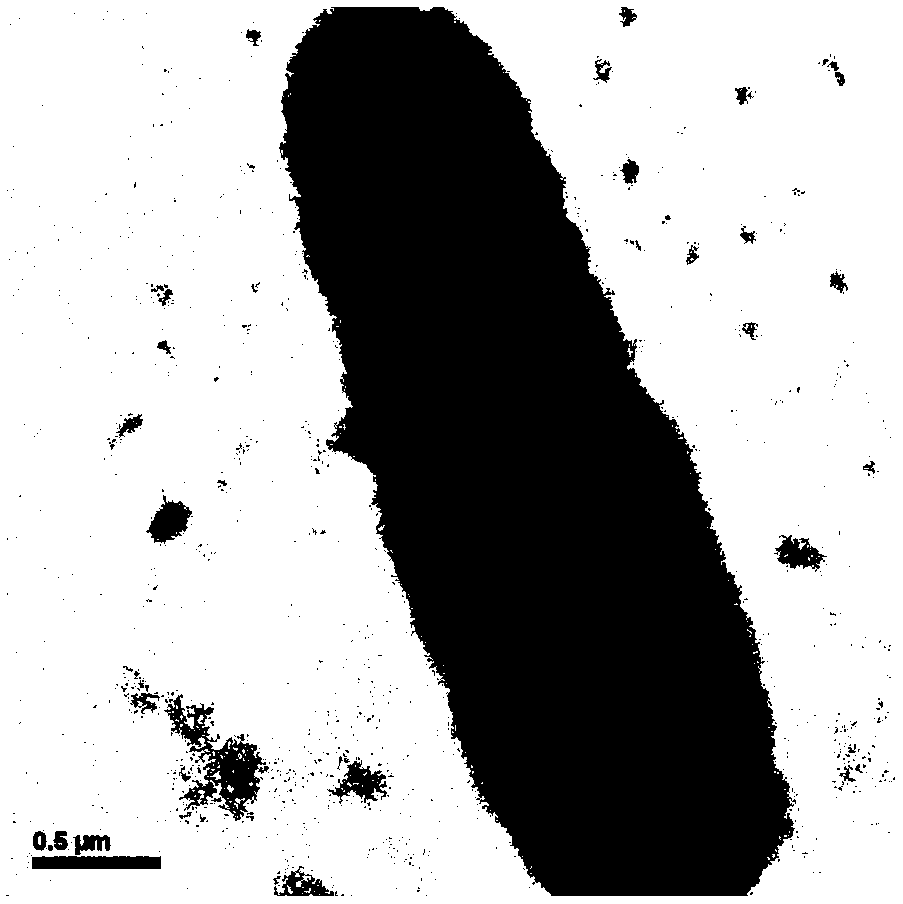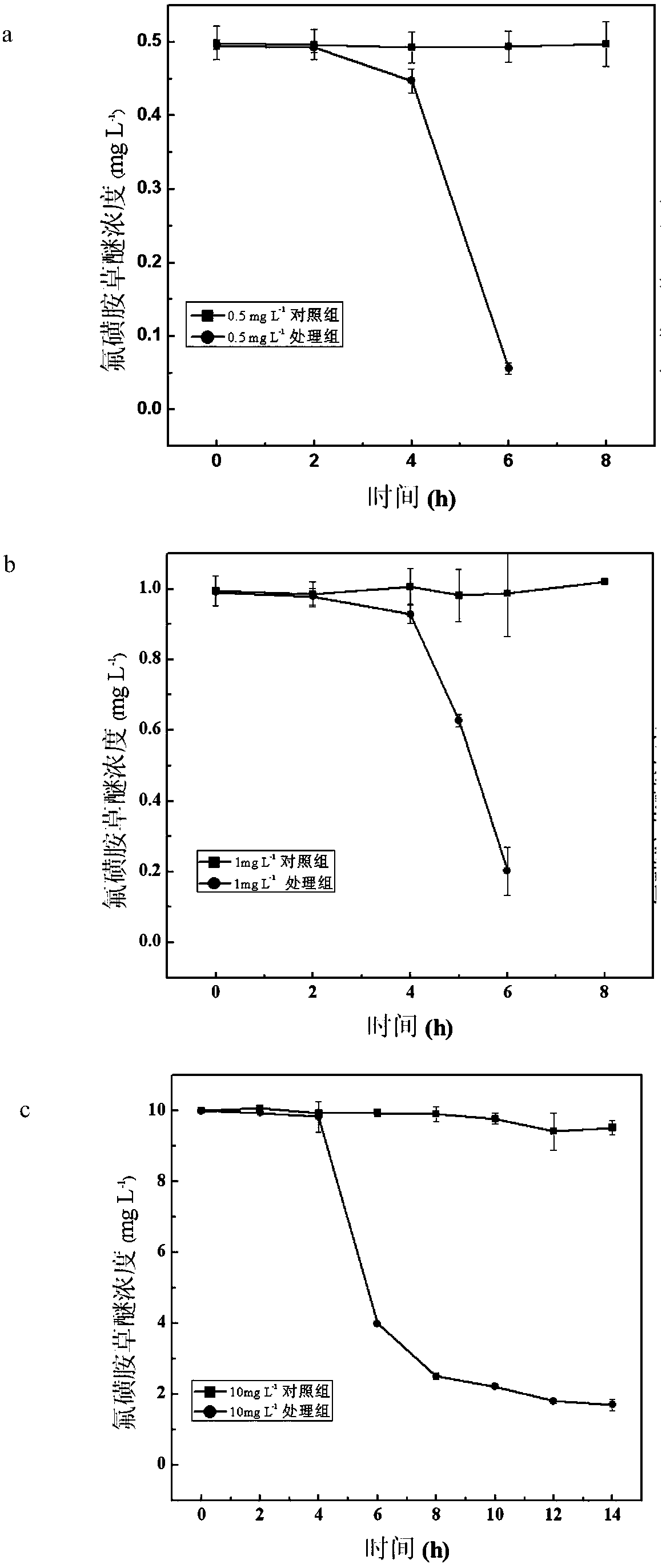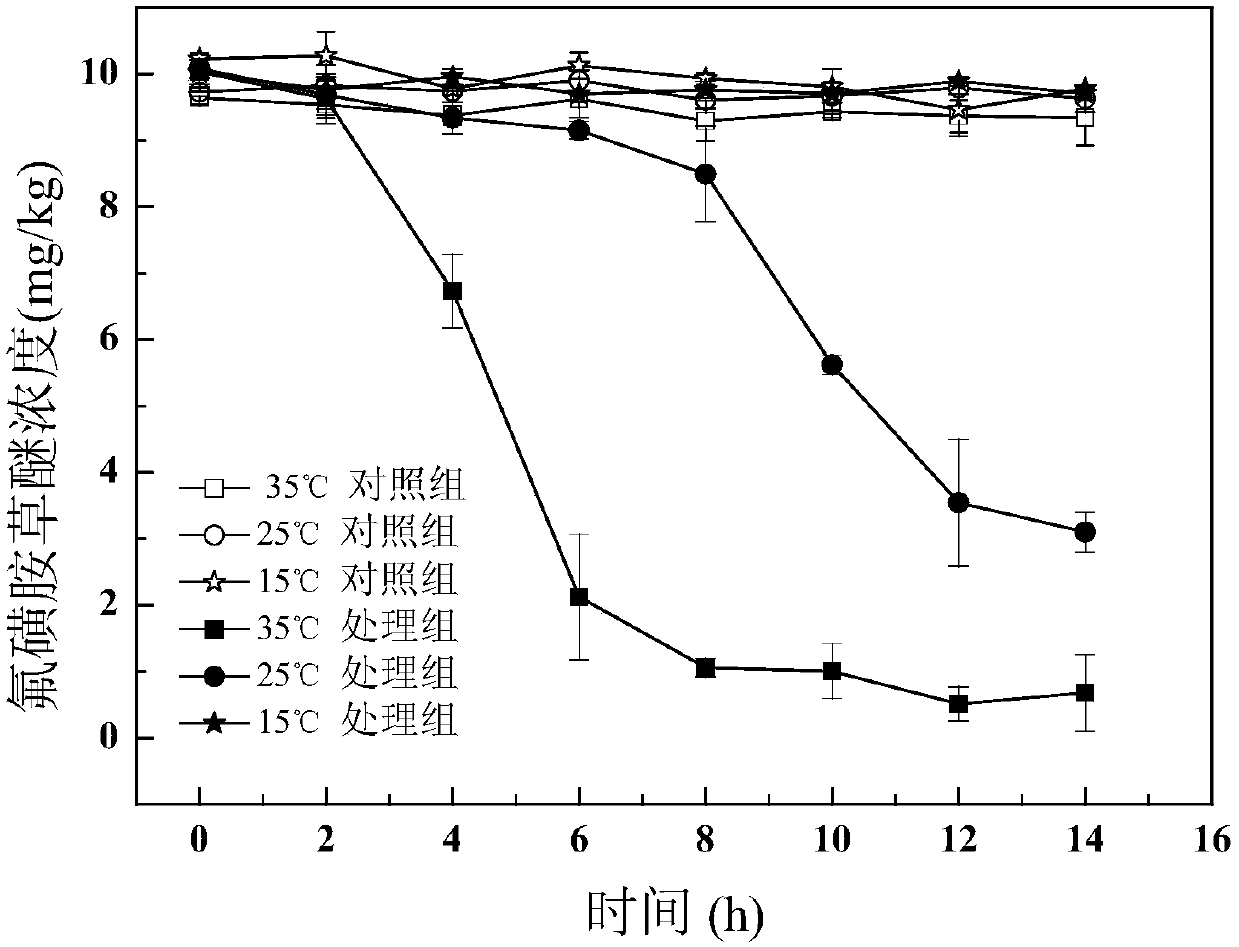A fomesafen-degrading bacterium and its application
A technology of fomesafen and degrading bacteria, which is applied in the direction of bacteria, microorganisms, biochemical equipment and methods, etc., can solve the problems of production failure, subsequent crop yield reduction of sensitive crops, pollution of soil environment, etc., and achieve simple cultivation process and low production cost The effect of low cost and broad application prospects
- Summary
- Abstract
- Description
- Claims
- Application Information
AI Technical Summary
Problems solved by technology
Method used
Image
Examples
Embodiment 1
[0032] (1) Strain isolation and purification
[0033] Soil samples were collected from paddy soil in Jiaxing, Zhejiang Province. Weigh 10.00 g of the tested soil sample into a 100 mL serum bottle, add 1 mL of artificially synthesized Fe(OH) 3 Suspension (15.4 mg / mL Fe content) and 50 mL deionized water were incubated at 30° C. in dark light for 1 week. The cultivated soil suspension was centrifuged at 700 rpm for 10 min, and the supernatant was taken as the microbial inoculum. The inoculum was diluted 100 times, 100 μL was spread on the LB solid medium plate, and the culture dish was sealed with parafilm. Place in a 30°C incubator for 2 days in the dark. Select a plate with uniform colony distribution, pick all single colonies, and culture them in ferric citrate liquid medium. 10mL serum bottles were used as culture bottles, and 5mL ferric citrate liquid culture medium was added to each bottle, flushed with nitrogen gas for 5min, and sealed. If the ferric citrate liquid m...
Embodiment 2
[0037] The effect of pesticide concentration on the degradation of fomesafen:
[0038] In order to study the effect of fomesafen concentration on its own microbial degradation, add 20mL pH 7.0 inorganic salt medium (containing 2.5g / L LB medium and 3.6g / L glucose) to three 25mL sterilized serum bottles respectively , and then each bottle was added fomesafen concentration to 0.5, 1 and 10mg / L, and an appropriate amount of strain FE-1 in the logarithmic growth phase was inoculated in the liquid medium, so that the number of strains reached 10 7 cfu / ml, and then placed in a shaker (30°C, 150rpm) for dark shaking culture, and correspondingly configured 3 blank controls without the bacteria, and the control group was also cultured under the above conditions.
[0039] Samples were taken at regular intervals at 0, 2, 4, 6, 8, 10, 12 and 14 hours of incubation, and the residual amount of fomesafen was detected according to the above method. The experimental group and the control group...
Embodiment 3
[0042] Effect of pH value on microbial degradation of fomesafen:
[0043] In order to study the effect of different pH values on the microbial degradation of fomesafen, 20mL of pH 6.0, 7.0 and 8.0 buffer (containing 2.5g / L LB medium and 3.6g / L Glucose), and then add 10mg / L fomesafen to each bottle. Inoculate an appropriate amount of bacterial strain FE-1 in the logarithmic growth phase in the liquid medium, so that the number of strains reaches 10 7 cfu / mL, and then placed in a shaker (30°C, 150rpm) for dark shaking culture, and correspondingly configured 3 blank controls without the bacteria, and the control group was also cultured under the above conditions.
[0044] Samples were taken at regular intervals at 0, 2, 4, 6, 8, 10, 12 and 14 hours to detect the residual amount of fomesafen. The experimental group and the control group each had three repetitions. The degradation curve of bacterial strain of the present invention to fomesafen under different pH conditions is ...
PUM
| Property | Measurement | Unit |
|---|---|---|
| Diameter | aaaaa | aaaaa |
Abstract
Description
Claims
Application Information
 Login to View More
Login to View More - R&D
- Intellectual Property
- Life Sciences
- Materials
- Tech Scout
- Unparalleled Data Quality
- Higher Quality Content
- 60% Fewer Hallucinations
Browse by: Latest US Patents, China's latest patents, Technical Efficacy Thesaurus, Application Domain, Technology Topic, Popular Technical Reports.
© 2025 PatSnap. All rights reserved.Legal|Privacy policy|Modern Slavery Act Transparency Statement|Sitemap|About US| Contact US: help@patsnap.com



